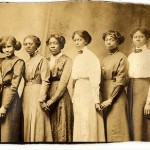With growth come growing pains. This is true whether we are talking about individuals or institutions.
This year I have a new job, and part of that new job is learning how to use all the technology at my fingertips. One tool which is new to me as well as my district is Canvas.
Canvas, as in “blank canvas.” Canvas is an online course system which allows me to have as much of my course content, assignment submissions, and learning community online as I want to. I can create an entire flipped course, or dabble in electronically submitted assignments recorded on the webcam. I get to design the online part of my course as I wish. Sweet.
But the metaphor of a blank canvas can be misleading. We think of a blank canvas as a realm of pure possibility. Because anything is possible, we alternate between an overwhelmed paralysis and exuberant creation. Each step of creation defines our canvas more and more, limiting and clarifying our thinking with each development, until we realize that in fact, this blank canvas is finite. Our expression is limited within four boundaries at the edges of the frame. This is a universal truth, in a metaphorical sense. Eventually, we push at those four boundaries, outside the box.
But thinking outside the box is more than just creative resistance. In the case of online tools, we must think outside the box and become advocates to protect our students from policies and practices which inadvertently toss us back to before FERPA (student privacy rights) and Brown vs. the Board of Education, which taught us that separate is in essence unequal.
What I found once I began to use Canvas was that my English Language Learners, because they are on a separate roster although they are in my classroom, are confined to a separate online classroom. The three of them. In other words, they can participate in online discussions with each other, but not with the rest of the class. Not on Canvas, anyway, which our tax dollars are funding. I’d have to find a free tool to use elsewhere (and get my students set up with it, etc., etc. It’s quite a process implementing the use of any online tool.)
Similarly, in other sections which are co-taught with exceptional education teachers, students with IEP’s are put into a separate roster and, hence, a separate section. Although it is easy for teachers to copy assignments from section to section, the problem goes beyond segregation in this case. Students can see the names of all the members of their Canvas classroom. Therefore, they are easily able to see who else in their class has an IEP and is therefore an exceptional education student. Oops. To me this seems like a clear FERPA violation. Not to mention that the students who are not in the exceptional education section are probably wondering why half of their class members are not in their online classroom.
I am absolutely sure this is not an issue that is confined to our district. I am not at all writing this to target them for criticism. As far as I can tell, the tech services department is working earnestly on these issues and others so that in the end we will have a great tool. But without the advocacy of teachers who, from the vantage point of their classrooms and their enthusiasm to work with an online learning community, the issues might not have been addressed before there were more serious problems with our larger community of parents and students.
Canvas, like any virtual tool or community, is not a blank canvas. Just like the walls of our classrooms or the content of our textbooks, it must be designed and used conscientiously, not only to meet the needs of our students, but to protect them from unnecessary stigma and isolation. My recommendation is to dive into online communities alongside your students, with some low-stakes assignments, and explore how things work in our new virtual worlds. Get student feedback, and work mindfully toward inclusiveness and community, just as you would in your physical classroom. Perhaps it takes a team of programmers to work through the technical issues, but the outcomes will be better if teacher and student real-time experiences are considered first.









